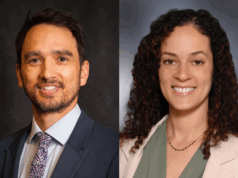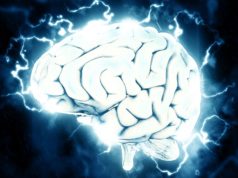
While physicians are generally aware that atrial fibrillation is a leading preventable cause of a recurrent stroke, there is a lack of understanding of the best ways to accurately identify atrial fibrillation in these patients. Richard Bernstein, director, Northwestern Stroke and Telestroke Program and professor of Neurology, Feinberg School of Medicine of Northwestern University, Chicago, USA, tells NeuroNews that a closer relationship between neurologists and cardiologists/electrophysiologists can help to improve the care of patients experiencing strokes of unknown cause.
How often does atrial fibrillation contribute recurrent stroke?
The risk of a recurrent stroke in patients with a recent stroke and atrial fibrillation has been estimated as high as 15% per year, in the absence of anticoagulation. When patients are anticoagulated, that risk plummets.
How do heart monitors work and what exactly do they do?
In general, the monitors we are interested in continuously analyse the heart rhythm and automatically detect atrial fibrillation; they then notify the monitoring company who confirms the diagnosis and notifies the patient’s doctor. What makes the current generation of monitors unique is that they can be used for months to years; much longer than we were previously able to monitor. This allows us to detect atrial fibrillation in patients in whom the abnormal rhythm is rare and brief.
Which patients are the ideal candidates for heart monitors?
Stroke patients in whom the diagnosis of atrial fibrillation would change medical management, usually from antiplatelet agents (like aspirin) to anticoagulants (like warfarin or the newer agents) are the ideal ones to monitor. These include patients with embolic stroke of unknown source, also called cryptogenic ischaemic stroke; and others in a variety of situations.
How can the implantation of heart monitors help to reduce recurrent stroke?
We think heart monitors reduce recurrent stroke by allowing us to detect rare instances of atrial fibrillation in these patients that would otherwise go undiagnosed, allowing us to put the patients on anticoagulation which is much more effective in reducing recurrence in patients with atrial fibrillation, but are not of proven benefit in patients without atrial fibrillation (with rare exceptions).
 Why are heart monitors not used in more patients?
Why are heart monitors not used in more patients?
Most neurologists do not know about this technology; and most cardiologists do not see cryptogenic stroke patients or recognise it when they do see it. Therefore, the two specialists who need to converge on the patient to initiate this testing often do not work together.
How can the situation be improved? Should neurologists and cardiologists/electrophysiologists be working more closely together?
Yes. Cardiologists are already the most frequently called consultant on stroke patients, performing echocardiograms and helping deal with cardiac conditions that are common in stroke patients. Neurologists should now ask them to place these cardiac monitors in appropriate patients, and cardiologists need to be able to do the procedure quickly and review the output of the devices in a timely manner.
What would a regular collaboration between neurologists and cardiologists/electrophysiologists look like, and why is it not common now?
Traditionally these are disciplines that had very little in common. I do see this changing; more stroke patients are getting long-term cardiac monitoring, but educating doctors is a painfully slow process.
Richard A Bernstein has disclosed that he is a speaker, consultant, and member of steering committees for Medtronic and was paid for his work on the steering committee of CRYSTAL-AF. He is also a researcher, consultant, and speaker for Boehringer-Ingelheim.












